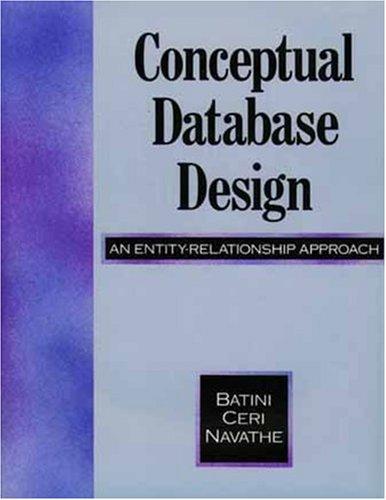Question
Develop a system flowchart and then write a menu-driven C++ program that uses user-defined functions arrays, and a random number generator. Upon program execution, the
Develop a system flowchart and then write a menu-driven C++ program that uses user-defined functions arrays, and a random number generator. Upon program execution, the screen will be cleared and the menu shown below will appear at the top of the screen and centered. The menu items are explained below. Help Largest Quit H or h ( for Help ) option will invoke a function named help() which will display a help screen. The help screen(s) should guide the user how to interact with the program, type of data to be used, and what results would the program produce. Each help screen should remain on the monitor until the user strikes any key. Once the user completes reading the help() screens, striking any key will clear the screen and the menu is displayed again. The main() function will declare an array of 15 elements. The elements are of type float. The menu option L will ask the user for the actual number of elements for the array. The program must verify that the actual number of elements does not exceed 15 and is not a negative number or 0. Your code must check for these.
L or l( for Largest ) option will invoke a function named largest( ) which will prompt the user for the number of elements for the array to be examined using the function sizeOfArray( ) which will read and validate the desired array elements and returns it to the calling function. The program will then use the returned size of the array to fill the array using the number generator functions shown at the end of this assignment. Your program will ask the user for the range of values for the elements of the array and uses these numbers in a random generator function to fill the array. Once the array is filled, the program will call the function findLargest( ) which will find and return the largest number in the array to the calling function. The program will then call the function frequency(), that will compute and return the frequency of occurrence of the largest number. The program will then display the array elements, the largest number, and its frequency of occurrence using the function display( ), in the format shown below. The output shown is for an array of five elements with an array identifier a. a[0] = xxxx.xx a[1] = xxxx.xx a[2] = xxxx.xx a[3] = xxxx.xx a[4] = xxxx.xx Largest no. = xxxx.xx Frequency = xx
Note that for the array elements, two digits after the decimal point is required (i.e., 298.35) and the frequency of occurrence is of type integer. The function prototypes to be used are as follows: void largest(float s[], int size); where s is the original array declared in the main() function and size is the maximum array size specified (15 elements in our case). //gets the desired array size and returns it int sizeOfArray(void); //finds the largest number in the array and returns it via the return statement.
float findLargest(float s[], int myS);
//where s is the specified array name and myS is the desired size of the array.
//Finds the frequency of occurrence of the minimum number
int frequency(float s[], float largestNo, int myS);
here, s is the desired source array, largestNo is the largest number found in the function findLargest(), myS is the desired size of the array. The frequency of occurrence of the largest number in the array is computed and returned via a return statement. For the largest number use x >= y when comparing two numbers. The function display() prototype is:
void display(float s[], float largestNo, int freq, int myS);
where s is the desired array name, largestNo is the largest number in the array, freq is the frequency of occurrence of the largest number, and myS is the desired size of the array. The results should stay on the screen with the following prompt which will appear in the lower right corner of the screen: Strike any key to continue... Once the user has entered any key followed by the enter key, the screen will be cleared and the menu is displayed again. Q or q (for Quit) option will clear the screen and returns the control to the Visual Studio IDE
6. NO global declarations of VARIABLES allowed in any program that you develop in this course.
11. Do not use
12. Do not use any #define in your program until the time that is required for class declaration header files.
13. No goto statements allowed in any program that you develop in this course.
Step by Step Solution
There are 3 Steps involved in it
Step: 1

Get Instant Access to Expert-Tailored Solutions
See step-by-step solutions with expert insights and AI powered tools for academic success
Step: 2

Step: 3

Ace Your Homework with AI
Get the answers you need in no time with our AI-driven, step-by-step assistance
Get Started


